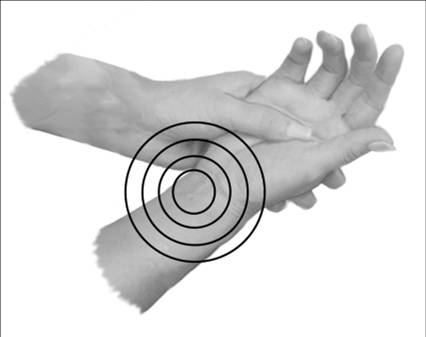Carpal Tunnel Syndrome
Carpal Tunnel Syndrome affects a large percentage of the population, although women are 2-3 times more likely to seek medical help for this condition because they tend to be more sensitive to the symptoms than men.
Frequently, individuals look for alternative solutions to avoid carpal tunnel surgery, anticipating that they will be unable to use their hand for 3-6 weeks after surgery. Often times, these alternative solutions only provide temporary, if any, relief and do not offer long-term solutions.
Carpal Tunnel Surgery: Quick Recovery at Nebraska Hand & Shoulder
At Nebraska Hand & Shoulder, our advanced, outpatient surgical treatment of carpal tunnel surgery will have you back to work or your hobbies within a day, with virtually no pain or restrictions.
A Credible Resource for Carpal Tunnel Syndrome
This site will help you gain a better understanding of just what carpal tunnel syndrome (CTS) is. You will have a chance to learn the true facts about solving carpal tunnel syndrome, as well as possible prevention. This site was developed in response to the overwhelming need to enlighten people due to the amount of nonfactual information confusing the issue.
Beware of Misleading Information on Carpal tunnel
Unfortunately, the nonfactual information is so readily available, such as "cumulative trauma disorder" or "repetitive strain injury" (RSI), quack treatment with vitamins and exercise, magnets, copper bands, crystals, food supplements, bogus medications (carpal tunnel Qwell and Carpal Tunnel Cream), and more.
We Provide Expert Carpal Tunnel Education
This website is heavily referenced with an annotated CTS bibliography to substantiate the facts herein presented upon request. Carpal Tunnel Syndrome (CTS) is one of the most commonly diagnosed problems in America ultimately affecting about one in six adults. Our grandparents suffered too but they were forced to accept the misdiagnosis (or self-diagnosis) of arthritis. Painful and/or numb or tingling fingers can be just the start. Many people also experience grip change (due to pain or associated ulnar nerve dysfunction), clumsiness, and symptoms that keep them awake at night.

Carpal Tunnel Causes and Symptoms
Carpal Tunnel Syndrome is caused by pressure on the median nerve at the wrist.
Symptoms typically arise after age 30 or during pregnancy. Women outnumber men 2:1 in developing CTS. Carpal tunnel syndrome is found to affect both hands in more than two thirds of those afflicted.
Research shows that conservative care (euphemistically termed "benign neglect") fails in more than 80% of the cases. Surgery remains the only definitive solution. For those who refuse to solve the problem sacrifices in activity level such as giving up sewing etc. are made. At the Carpal Tunnel Relief Center we offer a minimally invasive procedure. The Lincoln office is the only facility in the United States founded with the exclusive goal of relieving the effects of Carpal Tunnel Syndrome.
Call now! 1-855-344-HAND

*Agee, John M., et al. "Endoscopic release of the carpal tunnel: a randomized prospective multicenter study." (Journal of Hand Surgery, Vol. 17A, No. 6, November 1992, pp. 987-995).
Agee M.D., John M. Personal communication. "I don't know." (referring to the percent of patients going on to voc. rehab.) September 1996.
Brown M.D., Michael G., Hand Surgery Center of Texas. Personal communication. September 1996.
*Brown, Michael G., M.D., et al. "Results of 1236 endoscopic carpal tunnel release procedures using the Brown technique." (Contemporary Orthopaedics, Vol. 27, No. 3, September 1993).
Chow, James, M.D. "Endoscopic release of the carpal ligament for carpal tunnel syndrome: a 22 month clinical result." (Arthroscopy, Vol. 6, No. 4, 1990, pp. 288-296).
* Erdman, M.W.H., et al. "Endoscopic carpal tunnel decompression." (Journal of Hand Surgery, Vol. 19B, 1994, pp. 5-13.0
McCarrol Jr. M.D., H. Relton. Personal communication. September 1996.
Mirza, M.Ather, et al. "Palmar uniportal extrabursal endoscopic carpal tunnel release." (Arthroscopy, Vol. 11, No. 1, 1995, pp. 80-90.)
Nagle, Daniel, et al. "Prospective review of 278 endoscopic carpal tunnel releases using the modified Chow technique." (Arthroscopy, Vol. 10, No. 3, 1994, pp. 259-265.)
*Nathan, Peter A., et al. "Rehabilitation of carpal tunnel surgery patients using a short surgical incision and an early program of physical therapy." (Journal of Hand Surgery, Vol. 18A, No. 6, November 1993, pp. 1044-1050.)
*Palmar David H., et al. "Endoscopic carpal tunnel release: a comparison of two techniques with open release." (Arthroscopy, Vol. 9, No. 5, 1993, pp. 498-508.)
Resnick, Charles T., Miller, Brent W. "Endoscopic carpal tunnel release using the subligamentous two portal technique." (Contemporary Orthopaedics, Vol. 22, No. 3, March 1991, pp. 269-277.)
Tortosa, Richard D., Wilkins, Victoria. "Outcome study of employed patients treated with carpal tunnel surgery." (Presented at the American Association for Surgery of the Hand Meeting in Cincinnati, October 29, 1994.)
* Recommended reading
This is a small portion of the references for our carpal tunnel and ECTR information. If you would like additional information, please contact us toll free at 1-800-433-9147.



